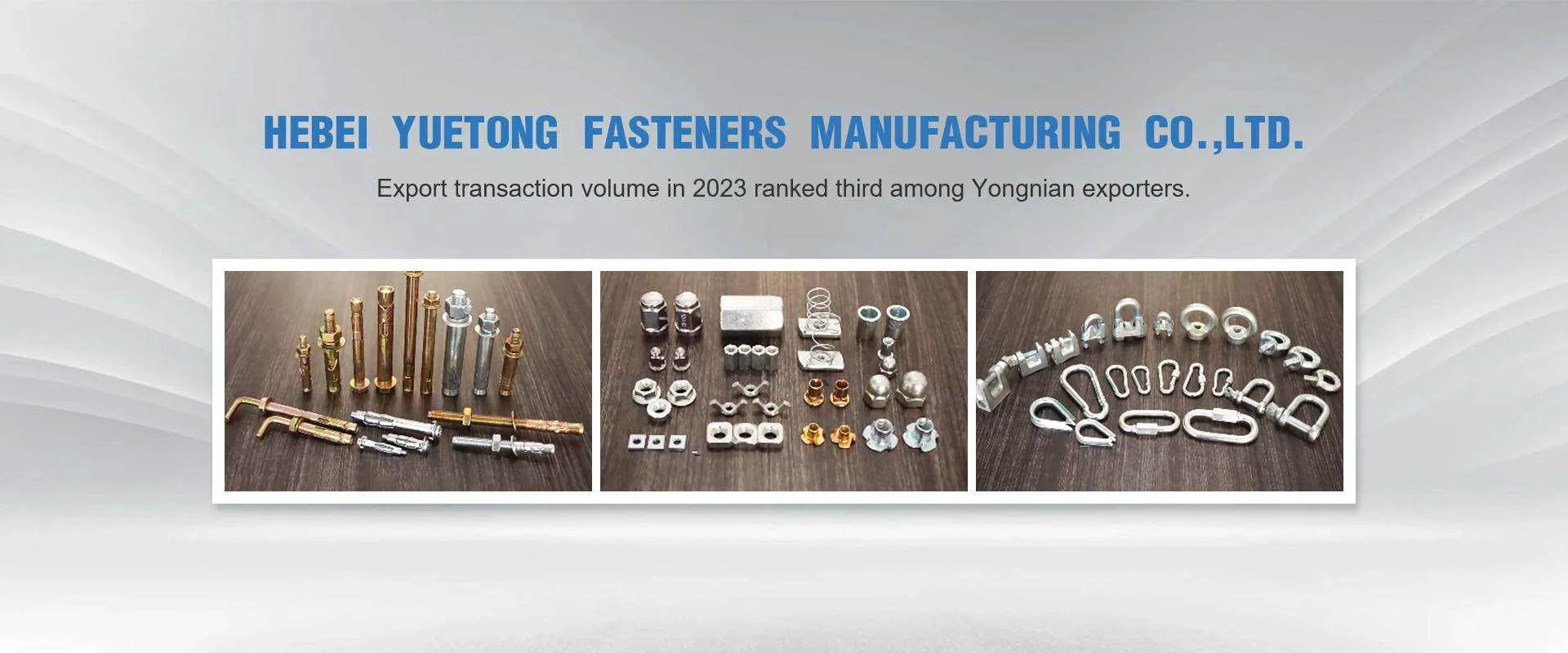अगस्त . 13, 2024 22:46 Back to list
Exploring the Benefits and Applications of Countersunk Dynabolts for Secure Fastening Solutions
The Versatility and Importance of Countersunk Dynabolts in Construction
In the world of construction and engineering, the choice of fasteners can significantly impact the integrity and durability of a structure. Among the myriad of fastening solutions available, countersunk dynabolts stand out due to their unique design and functionality. Understanding their characteristics, applications, and advantages can help both professionals and DIY enthusiasts make informed decisions.
A countersunk dynabolt is a type of screw anchor designed for use in solid materials like concrete and masonry. Its defining feature is the countersunk head, which allows it to sit flush with the surface of the material when installed. This characteristic not only contributes to a sleek, unobtrusive finish but also reduces the risk of snagging or damage from external elements.
One of the primary advantages of using countersunk dynabolts lies in their reliability
. The design of the dynabolt consists of a sleeve that expands when the bolt is tightened, gripping the sides of the hole and providing a secure hold. This mechanism is particularly effective in resisting pull-out forces, making it an ideal choice for applications where stability and strength are paramount. Whether used in constructing buildings, bridges, or even in small-scale home renovations, these fasteners ensure that components remain securely anchored.countersunk dynabolt

In addition to their robust performance, countersunk dynabolts offer versatility in terms of application. They can be used for a wide range of tasks, from fastening structural elements like beams and columns to securing fixtures such as shelves and cabinets. The flush design also makes them suitable for situations where a smooth surface is necessary, such as in flooring installations or wall paneling. Furthermore, they are available in various sizes and materials—such as stainless steel and galvanized options—which cater to different environmental conditions and aesthetic preferences.
Installation of countersunk dynabolts is relatively straightforward, which is an additional benefit for both professionals and do-it-yourselfers. The process typically involves drilling a hole into the substrate, inserting the dynabolt, and tightening the nut to activate the expansion mechanism. It is essential, however, to select the appropriate size and length of the bolt to ensure optimal performance and safety. Accurate drilling of the hole is also crucial, as it directly influences the effectiveness of the anchor.
Despite their many advantages, it is essential to consider potential limitations when using countersunk dynabolts. The quality of the base material plays a critical role in determining the effectiveness of the fastening solution. For instance, very brittle or low-quality concrete may not provide the necessary support for a stable hold. Additionally, when working in environments prone to vibration or heavy loads, it may be prudent to assess the long-term performance of these fasteners and potentially consider alternatives or additional support systems.
In conclusion, countersunk dynabolts represent an essential component in the toolkit of builders and contractors alike. Their design, which allows for a flush finish, combined with their reliable anchoring mechanism, makes them suitable for a wide variety of applications. Whether in large construction projects or smaller home improvements, the importance of selecting the right fastener cannot be overstated. As construction techniques evolve, the role of quality fasteners like the countersunk dynabolt will undoubtedly continue to grow, ensuring that structures remain safe, secure, and aesthetically pleasing.
-
The Ubiquitous Reach of DIN934 in Application Realms
NewsMay.16,2025
-
Exploring Different Bolt Types
NewsMay.16,2025
-
Cracking the Code of Sleeve Anchor Mastery
NewsMay.16,2025
-
Clamp Design Principles,Types and Innovations
NewsMay.16,2025
-
Artistry Inspired by the Humble Anchor Bolt
NewsMay.16,2025
-
A Deep Dive into Screw Types
NewsMay.16,2025


